This has been my very first time kneading my dough using a mixer, a brand new Ankarsrum, and the crumb is very different from what I've been used to kneading by hand: much more close....
Did I over-knead it?
Here is my process for 2 loaves:
1kg sifted wheat flour (equivalent T80)
84% hydration
2.2% salt
18% active whole spelt starter (vol double in 5h - ratio 1:1:1)
Fermentolyse for 45mn (dough mixed lightly with the roller for 2mn)
Add salt + 50g water / Knead for 12mn on speed 2-3 O'Clock with the roller
At the end of the 12mn the dough was very nice and soft, lovely window pane (but very extensible due to the spelt levain I guess)
S&F after 30mn
S&F after another 45mn
Bulk time: 5h20 at 26C
Pre-shaping / rest 15mn / shaping / rest 15mn at RT
Oven pre-heated at 260C / Baked in DO at 230C for 30mn then 220C with no lid
Thank you in advance for your thoughts on the matter!
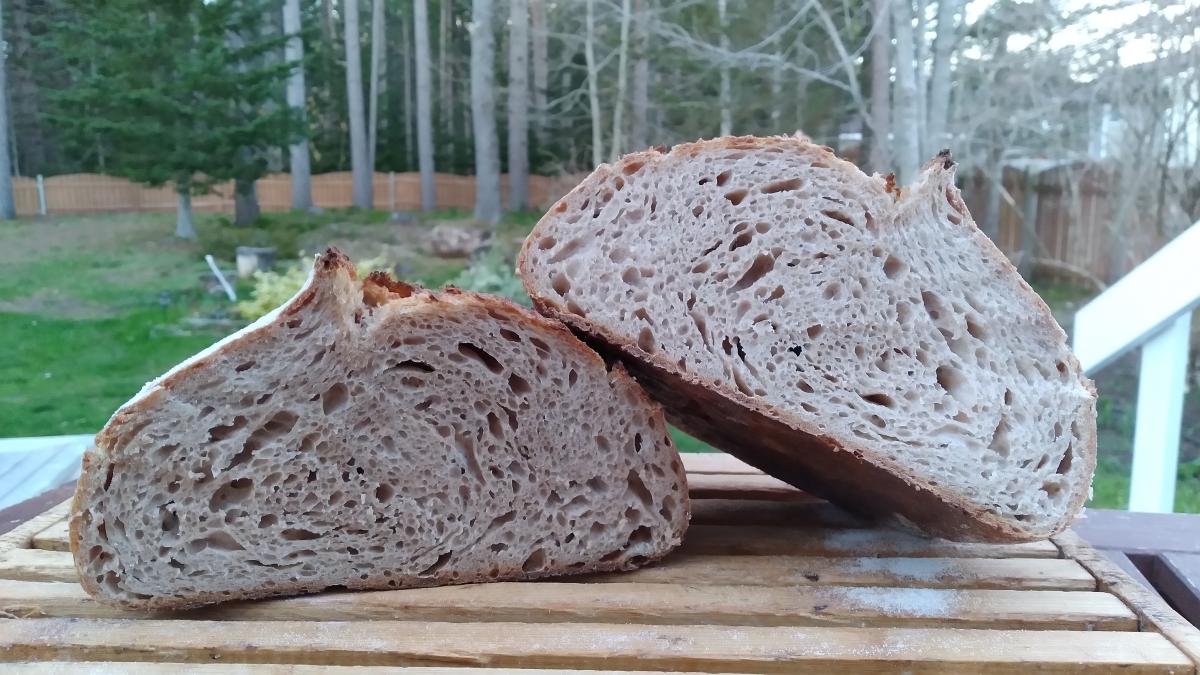
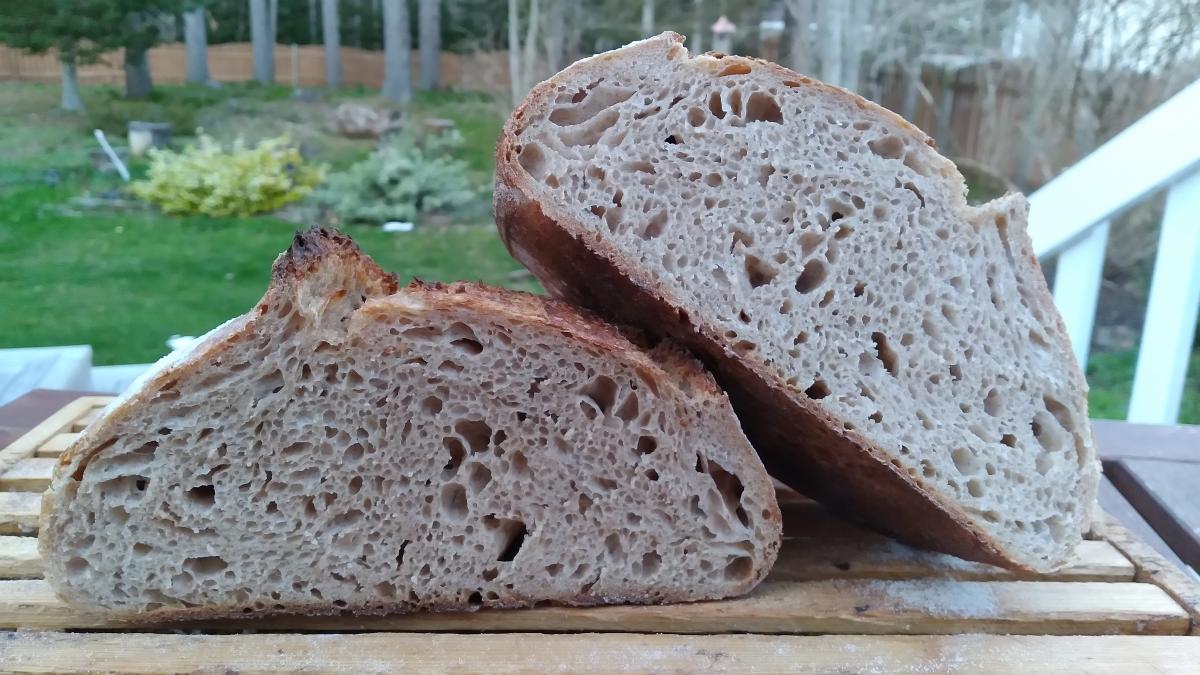
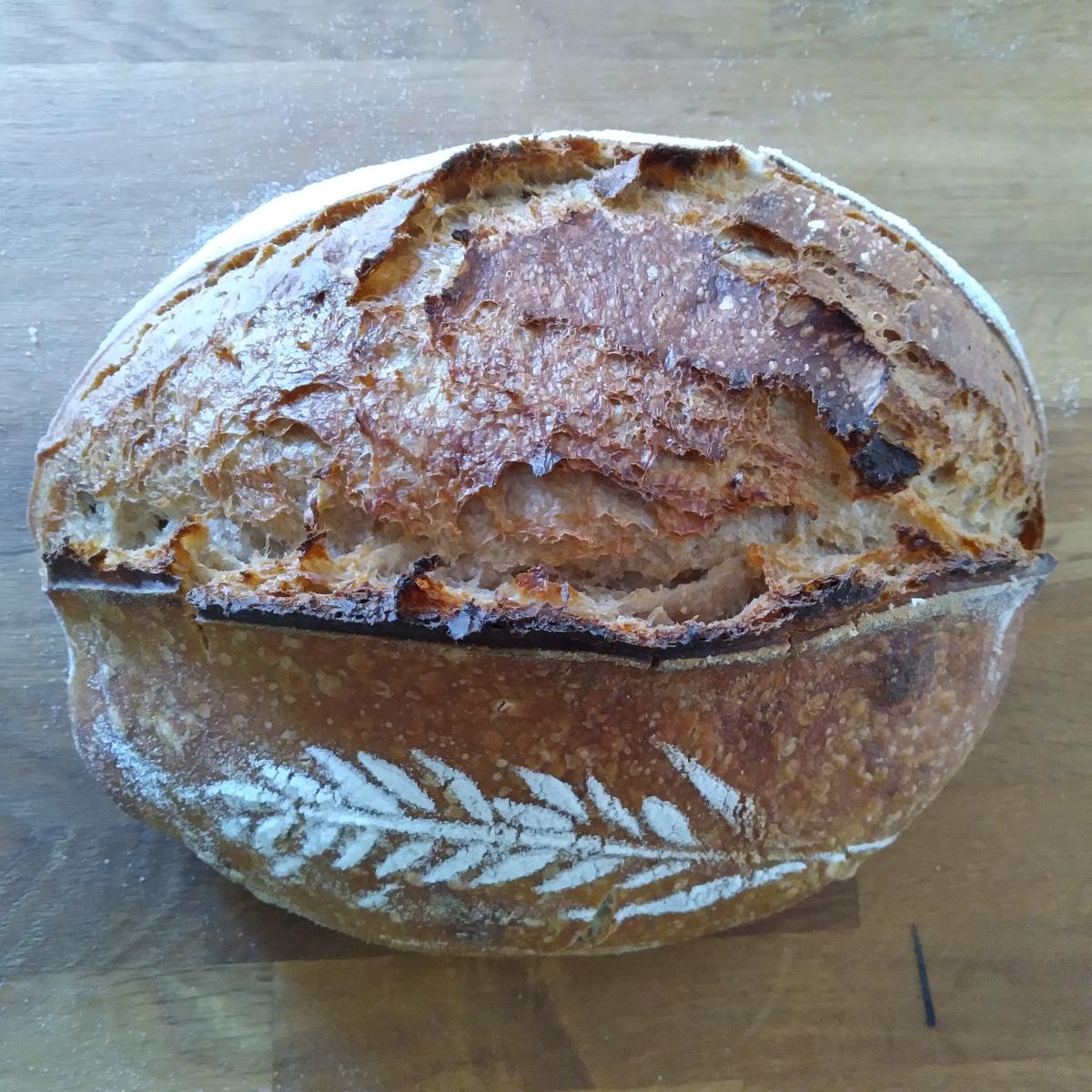
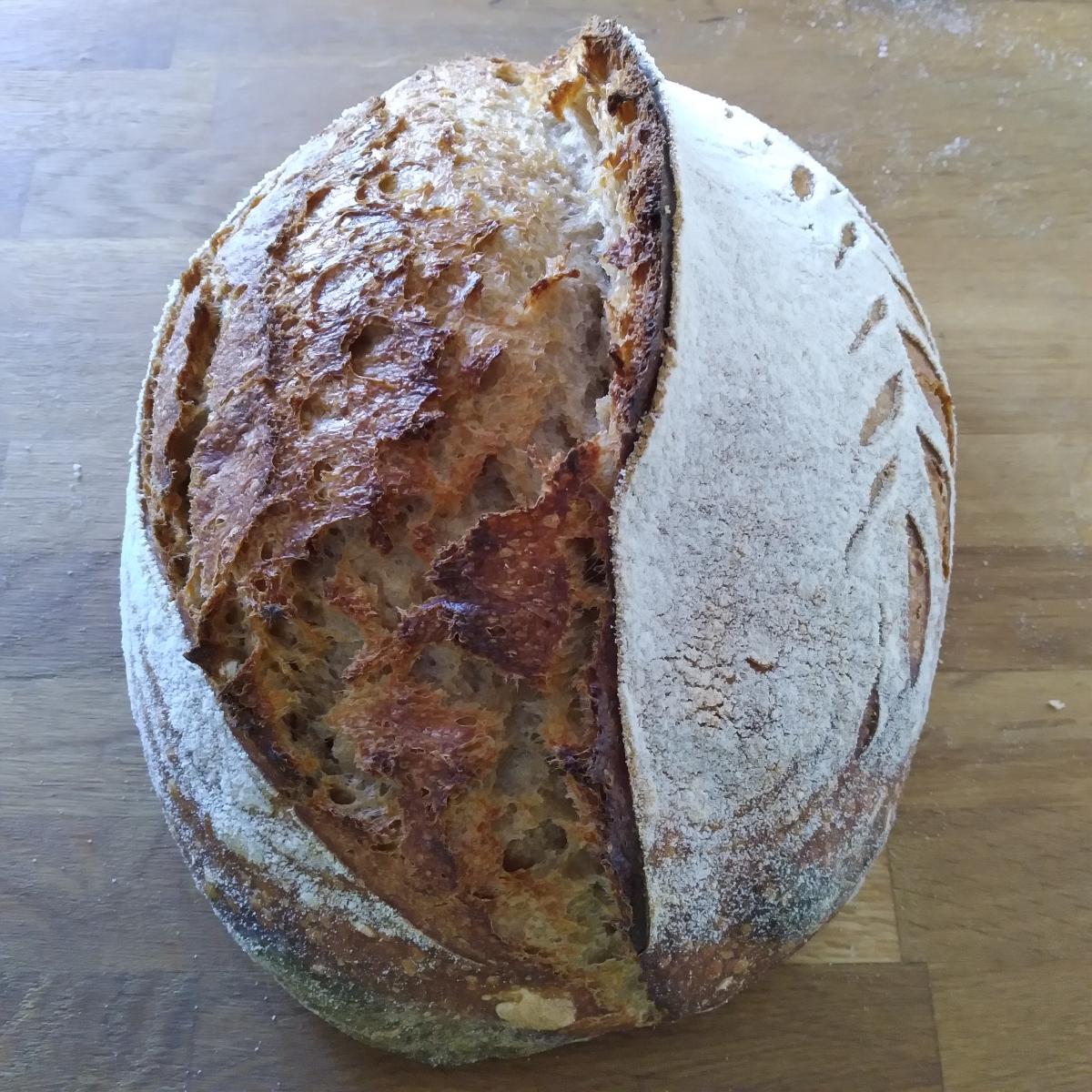
Here is a picture of the typical crumb I get kneading by hand:
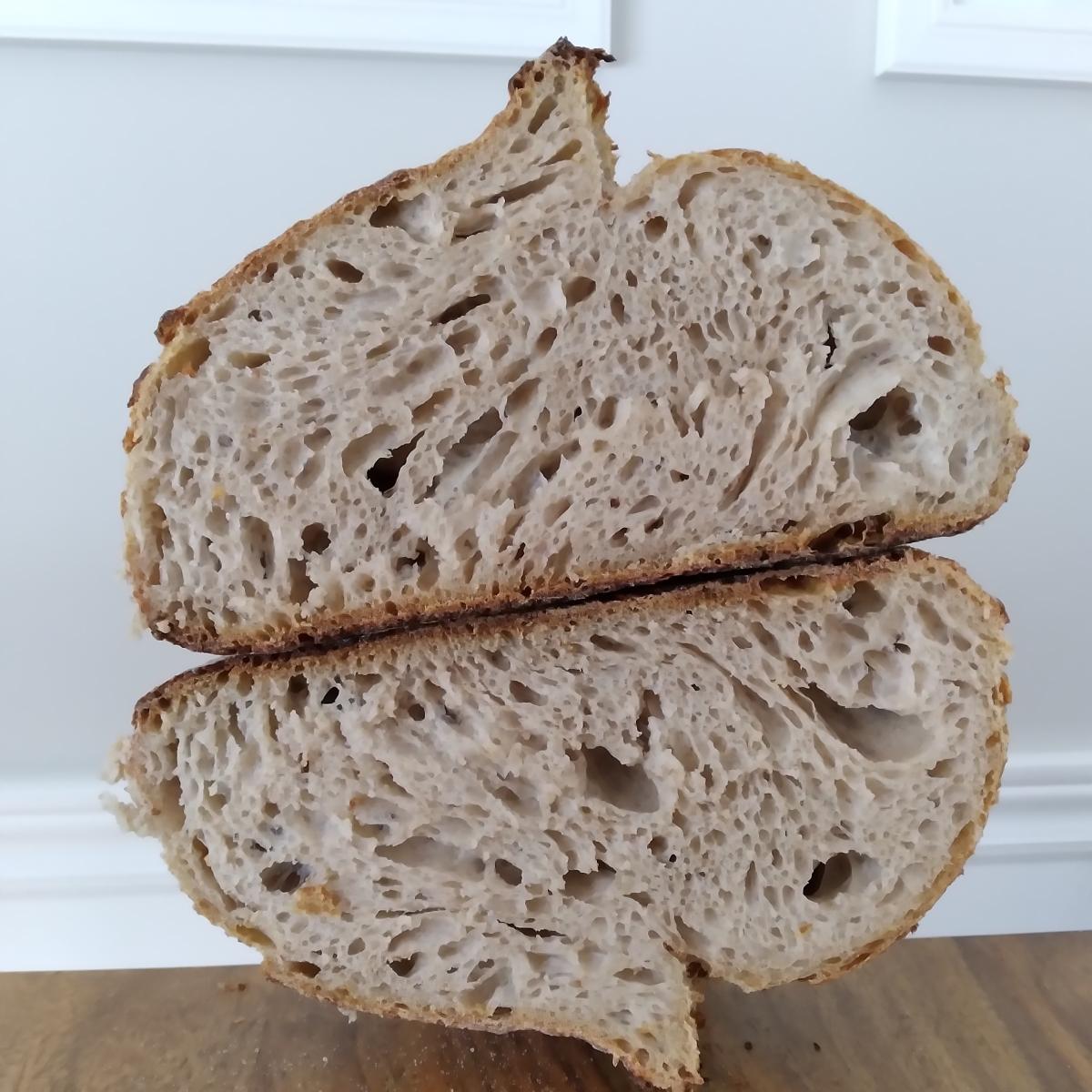
Scrumptious looking loaf.
If the spelt starter is new, that should also be on the suspect list as to causing a change. Both its starch and its protein is different enough from regular wheat as to cause changes.
Interesting!
The fact is that I had a 100% whole spelt starter for quite a while when I made a stupid mistake 2 weeks ago and used the entirety of my starter to create my levain, which I only realized with horror when I took the loaves out of the oven...
So I used my dehydrated backup starter that was created 8 months ago (50% whole wheat - 50% sifted wheat flour) to start a new starter, feeding it with whole spelt only...After a week of constant CPR, I finally succeeded to resuscitate my starter and for a few days in a row it nicely doubled in size after 5h at 26C before I used it for this bake.
So in a way my starter is rather new indeed, that's true...I had not thought of that!
With the speed dial at 3 o'clock the speed should be fairly high with my Ank, but 12 min of mixing does not seem very long. I usually knead mine for 20-30 min at a lowest speed but that also depends on the makeup of a particular dough too as I may not necessarily want to fully develop a dough in the mixing every time. If you monitor the dough temp closely during mixing then overmixing should not be an issue assuming you know what a desirable temp you want it to be.
12 minutes is not very long with the Ank at all. I usually do 15-18 minutes.
Yeah, Ian, even with an 18 min of mixing at a lower speed it might not be enough to fully develop a dough in some cases. I remember at one time I tried to mix a dough for about 1 hour as an experiment and was surprised it took a long time to heat it up at a lowest speed. When I use my Ank, I constantly move the scrapper to stretch the dough so there is a lot of manual movement involved for me even with a machine mixing. Anyhow, bottom line is mixing time will depend on the dough and a desired condition from the baker so times from different people are kind of meaningless from one to another baker. Thanks.
20-30mn? Whow, that seems super long compared to my usual 5-6mn of hand mixing ;-)
I usually try to keep my dough at around 24-25C, and 12mn of mixing with the Ank did not change the dough temp at all
Gorgeous breads, both bakes! I wish I'd baked them 😊
I think you can safely cut some mix time. There were two S&Fs and a long bulk after the mix. Those things will strengthen the dough, so no need to go for full windowpane in the mixer, especially since you feel the crumb was tighter than you'd like it to be. Next time you make this bread, cut some time from the mix, just a minute or two at most. Jot down the new mix time, some details about the dough consistency or maybe even take photos. Also make notes on the end result. Adjust again next time based on the results and you'll have it dialed in within a few bakes. BUT... as Dave pointed out, everything matters, so change only one factor at a time to better understand the effects of each change. Good luck!
–AG
EDITED to add that if you end up cutting too much time from your mix and you find that it feels weak, you can easily add an S&F or two.
Thank you for the advice!!
Gaelle, I think that your starter is doing a wonderful job. Your new bakes are beautifully fermented, perfect. I don’t see anything wrong with them whatsoever. Now if you want to try to open it up a bit more, with the strength you built up front using the mixer you might be able to ferment a bit longer, maybe another 30 mins after shaping.
Benny
I second your thoughts Benny, when i read the times for the bulk fermentation and then saw the relatively short final proof i thought it might be a bit lop sided. How did you gauge the readiness for the oven, the very gentle finger tip press or size. You should expect more volume given that the machine has probably put a lot more development into your dough than you would be getting in a hand mix, so if you were going on comparative size of your normal hand mixed loaf then perhaps the machine mixed dough was still a way further to go.
i also agree its a great looking loaf.
You will have great fun working out little tweeks but as previously mentioned try doing just 1 thing at a time with copious note taking
kind regards Derek
Thank you Derek for your feedback; so are you suggesting that I should shorten the bulk and lengthen the final rest before putting the dough in the fridge? By lopsided, do you mean that the 2 phases (bulk + final rest after shaping) should be more balanced in terms of duration?
Thank you for your comment Benny;
I don't think there is anything wrong with my bakes, it is just the difference in the crumb that surprises me compared to my usual hand-mixed loaves...I'm trying to understand...
Actually I am always a bit perplexed when it is time to decide how long I should let the dough rest after shaping...What does it change if I let the dough rest let's say 30mn after shaping or if I extend the bulk by 30mn before shaping then straight to the fridge..I have no clue....
When we shape we tend to even out the crumb at least a bit. So with little proofing time after shaping you tend to have a more even crumb than with a longer proofing time after shaping.
If we could shape consistently every time, you could do an experiment where you made a double batch of dough. Each would receive the same total time for fermentation. You could then shape one much sooner than the other, but then give it much more final proofing time so that the total fermentation time for both was the same. You should generally see that the one with the shorter bulk and longer final proof has a more irregular crumb while the one with the longer bulk and shorter final proof has a more even crumb.
In any event, your most recent loaf with the stronger gluten development looks like it could be allowed more fermentation IF you wanted to open the crumb up more as it should be strong enough to tolerate more fermentation.
Benny
Awesome advice, as usual Benny!!! That will be my next experiment! Thank you!!